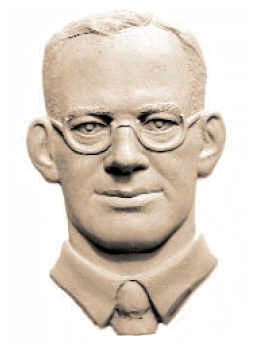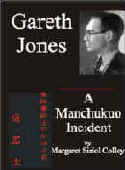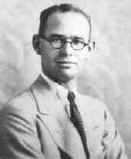Gareth Jones
[bas relief by Oleh Lesiuk]
HOME |
Stop Press |
Complete Soviet Articles & Background Information |
Précis of Gareth's
|
All Published Articles |
BOOKS
|
|
|
|
More Than Grain of Truth(2005) |
|
|
TOPICAL
'Are you Listening NYT?' U.N. Speech - Nov 2009 |
Gareth Recognised at Cambridge - Nov 2009 |
Reporter and the Genocide - Rome, March 2009 |
Order of Freedom Award -Nov 2008 |
Premiere of 'The Living' Documentary Kyiv - Nov 2008 |
Gareth Jones 'Famine' Diaries - Chicago 2008 |
Aberystwyth Memorial Plaque 2006 |
GENERAL
Scholarship Fund |
Site Map |
Links |
Legal Notices |
Sponsored Links |
Contact |
The Western Mail 8th August, 1933Craftsmen of Wales HOME OF A FORMER WELSH OIL INDUSTRYWhen Oaks Were Brought to Brechfa WorksBy GARETH JONESBy Gareth Jones One could hardly credit the charming village of Brechfa, in Carmarthenshire, with once having been the Texas of Wales. I do not mean to say that wild cowboys cracking revolvers dashed along after Indians in the Cothi Valley, or that Carmarthenshire millionaires, puffing great cigars, drew vast fortunes from that district to spend them at Barry, the Coney Island of Wales, or in the speakeasies of Cardiff. I mean that Brechfa was once the home of the oil industry, and what Llandarcy, with its refineries near Swansea, is today, Brechfa was yesterday. You will not see the series of high derricks of Texas nor the stirring sight of high gushers when oil is ejected into the air. In fact, you will see nothing except a collection of some of the tallest finest trees in Wales, a profusion of red and yellow plants and weeds, shrubberies of alders, the remains of a few kilns overgrown by brushwood, some heaps of lime and some traces of charcoal. That is all that is left of the once flourishing oil works of Brechfa. How to Got ThereTo reach the spot you go from the church to the bridge, and when you have crossed the bridge turn across the field to the left and past some cottages. But the best way is to take Mr. David Thomas, whom you may find working in the churchyard, and he will explain all. I searched in vain for signs of oil in the ground and was puzzled until Mr. David Thomas told me that the oil was obtained from the hosts of small oaks which flourish in that district. When men and women had brought down the oaks the wood was put into ovens (retorts) in two lengths of one yard each. After twelve hours it came out in the form of charcoal. From the oven the vapours were led in pipes passing through a pond which acted as a water condenser. These vapours were condensed into tar, water-and oil, which were collected into “sumps” (or receivers or tar-wells), as used in a modern gas-works. The tar went into one receiver and the oil into another. The watery oil was then pumped into vats and mixed with lime. This mixture of oil and lime was then churned in the old-fashioned way, as if it were cream. When it was churned until there was a froth on top it was allowed to settle down, and was then put into a big boiler, where it was boiled. It then became vapour again and was carried out in vaporous form through a pipe into a. cask in the naphtha room. Alter various other processes the residue was left in different barrels until the final light oil was produced. Products of the WorksAmong the products of the works were solvent naphtha, which, having a higher flash-point than paraffin, is used in a blow lamp to singe horses and to burn old paint off doors; and pitch, which was run out as tar and cooled. Three or four sorts of charcoal were manufactured. Black powder for sooting was made from birch, alder, fine ash, and hazel. Lime salt (calcium acetate), which is used to make vinegar and in pickling, was produced. Another product was spirit of naphtha. The oil works were in action up to and during the war when it was valuable to the War Office in the production of munitions. It will be recalled that alder wood is used for making gunpowder charcoal. Relic of the PastBefore the war twelve to fifteen men were employed at works alone, and were receiving about 2s. 6d. per day. Women were occupied to take the bark off the alders, for if they burnt the bark the charcoal was spoilt. The power used in the works was water power and the big wheel still stands, one of the few relics of the past. It is probable that the stream had been providing the power for these works for about two centuries. To-day the oil works of the past have an interest for the botanist, for shrubs and weeds and flowers have sprung up at a very rapid rate in the soil, which has been influenced by the products of the works. And when you say good-bye to Brechfa and your America or Persian or Rumanian or Russian petrol makes you speed along, just think of the contrast between the world oil industry of to-day and that humble but ingenious Welsh industry of yesterday. |
GARETH JONES (1905 -35) |




